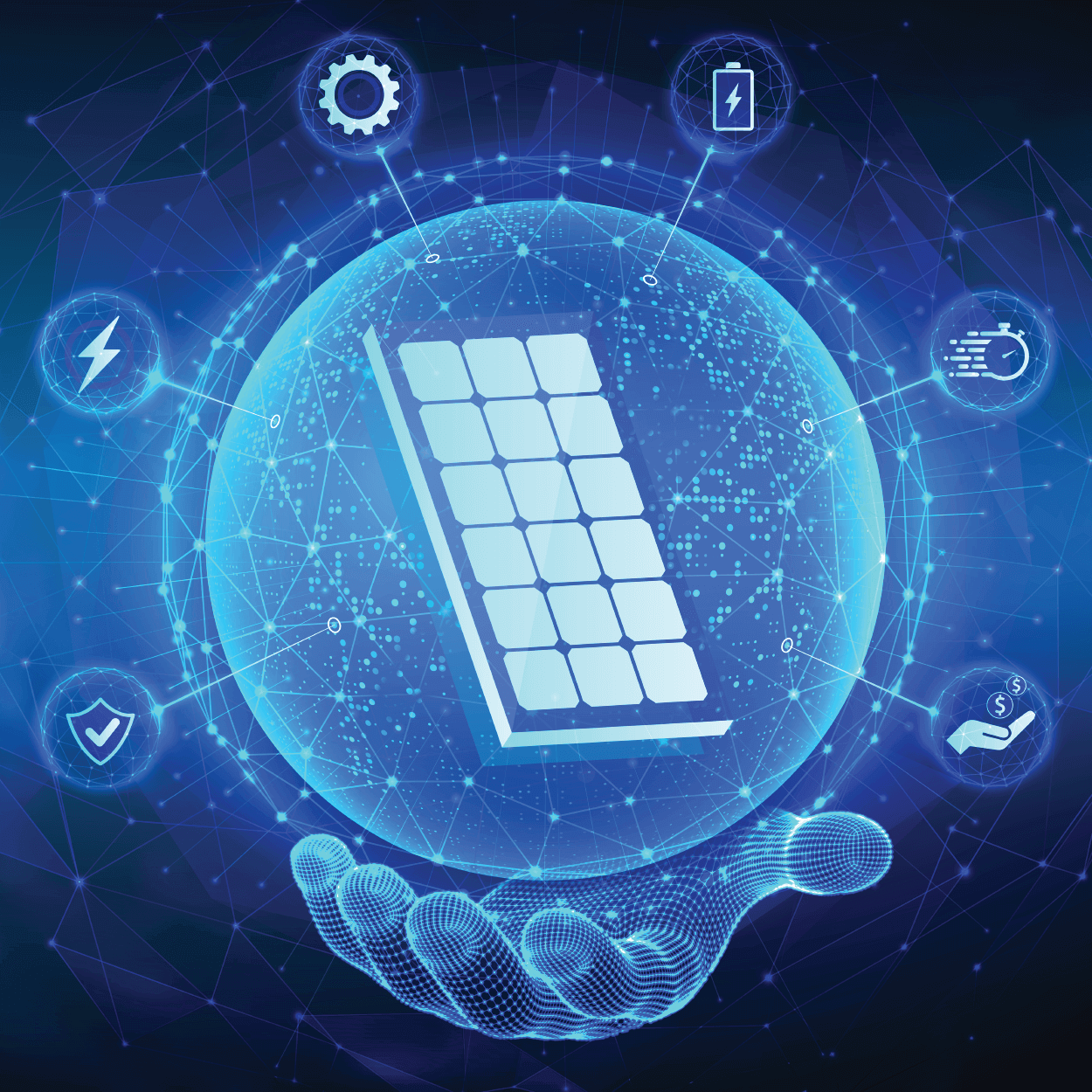
Solar batteries are becoming a popular option for homeowners who have solar panels, due to recent advances in solar storage technology. Learn more about how solar batteries are becoming more affordable, more efficient, and more accessible in 2023.
How Solar Storage Works
Solar batteries store clean energy generated by your solar panels during the day for use at night, on cloudy days, or during emergencies like power outages.
A solar battery allows you to use excess power produced by your solar system, rather than sending it to the power grid. It decreases your household’s grid usage at peak times and saves you money if your utility charges time-of-use rates or you don’t have access to net metering.
As demand for green energy increases, solar storage on residential and commercial scales has become increasingly important. Energy storage keeps homes and businesses running through fluctuations in power generation. Batteries can also improve the power grid’s resilience during blackouts or extreme weather events.

Solar Battery Innovations in 2023
With solar battery capacity set to double in 2023, new innovations are leading the way to optimize performance, lower cost, improve safety, and advance sustainability. Here are some of the most promising solar battery innovations in 2023:
Artificial Intelligence Optimizes Battery Performance
It has been an exciting year for artificial intelligence (AI) development in 2023, and such advancements are also improving solar battery performance. According to Josh Mitchell, owner of Air Conditioner Lab, this technology “leverages AI algorithms to optimize power usage and prolong battery life.”
Several solar battery products already incorporate AI technology for improved battery performance and lifespan.
Lithium Iron Phosphate Cathodes Lower Costs and Improves Safety
Lithium-ion batteries are a popular choice among homeowners looking to go solar. Cathodes are a crucial component of solar batteries that facilitate charging and discharging. However, traditional cathodes are expensive and pose a risk of catching fire due to overheating. Lithium Iron Phosphate (LFP) cathodes offer lower costs, enhanced performance, and improved safety features for lithium-ion batteries.
Although lithium iron phosphate cathodes are not completely new, MIT Technology Review reports 2023 could be a “breakout year” for LFP, and the market share “is growing quickly” as technology improves.
Silicon Battery Anodes Increase Storage Capacity
The anodes in solar batteries accept charged particles, facilitating the storage and discharge of energy. Most anodes are made of graphite, but silicone anodes are helping increase energy density and expedite charging.
Researchers and startups have been working to create viable silicon anodes for years, but have faced difficulties with silicon’s durability and longevity. Because of breakthroughs and incremental developments in recent years, silicon anode technology is becoming mainstream in personal electronics and electric cars. As silicon anodes improve, so will solar battery technology.
Iron Flow Batteries Meet Demand for Utility-Scale Energy Storage Solutions
Iron flow batteries are an emerging technology that could meet the increasing demand for energy storage solutions using nontoxic and readily available materials — iron, water, and salt.
Unlike lithium-ion batteries, iron flow batteries are cheaper, longer lasting, and easier to use to increase storage capacity on a large scale. According to the MIT Technology Review, this technology will help utilities make “the electric grid more resilient to extreme weather and other effects of climate change,” a goal at the forefront of local and federal governments in 2023.
ESS is the first major company to store energy on a commercial scale with iron flow batteries, meeting the growing need for multi-hour backup energy capacity. ESS’s first installation, a one-megawatt (MW) plant in Minnesota, is scheduled to finish construction this year. The company also partnered with California’s Sacramento Municipal Utility District in 2022 to generate 200 MW in iron flow batteries.
Scientists Continue Developing Sustainable Battery Technology
The Inflation Reduction Act (IRA), passed by the Biden administration in August 2022, has spurred massive investments in domestic renewable energy efforts, including research and development.
For example, Vijay Ramani’s research team at the McKelvey School of Engineering received a $2 million federal grant to continue researching the impacts of their alternative solar battery solution. Ramani’s team of researchers has created a battery that uses titanium and cerium to replace the expensive material vanadium in new flow battery technology.
Scientists across the U.S. are developing battery technologies for small- and large-scale projects, focusing on scaling new innovations and finding alternatives for lithium and graphite, two materials in batteries that are exceedingly energy-intensive to mine.

Areas of Improvement in Solar Technology
Although solar batteries are becoming increasingly popular and more readily accessible, researchers and scientists are still working to improve this technology:
- Lifespan: While most solar panels last between 25 and 40 years, solar batteries typically last 10 to 15 years. Most solar batteries on the market currently have a 10-year warranty.
- Capacity: A single solar battery will likely power your household for several hours, or up to one day if you strictly conserve energy. Researchers are looking for ways to increase battery capacity without increasing costs or system size.
- Cost: The U.S. Office of Energy Efficiency and Renewable Energy estimates adding a solar battery to your solar system can cost between $12,000 to $22,000. Although this is still high for many homeowners, the price of solar batteries has decreased by 97% in the last three decades and continues to decline.
- Environmental impact: Overall, renewable energy sources like solar have a significantly lower environmental impact than fossil fuels. However, manufacturing solar batteries requires mining copper, cobalt, nickel, lithium, and rare earth metals, all of which have significant environmental impacts. Electric vehicle (EV) and battery storage manufacturing make up 30% of the total demand for Lithium, a metal highly energy-intensive to mine.
Should You Purchase a Solar Battery?
Solar batteries are becoming increasingly popular among homeowners. If you prioritize energy independence or want to keep your power on during an outage, a solar battery is an excellent investment.
However, a solar battery doesn’t always save you additional money on your energy bills. If finances are your priority, speak with a solar representative to see if purchasing a battery is worth it for you.
Should You Upgrade an Existing Solar Battery?
It’s best to wait until your solar battery reaches the end of its lifespan (typically 10 years) before you upgrade or replace it. This is more cost-effective and reduces the long-term environmental impact of your energy storage system. For example, a solar battery used for only 3,000 charge cycles instead of 5,000 has a 16% higher greenhouse gas emissions impact, according to a study from the International Energy Agency.
If you are interested in upgrading or replacing your solar battery, contact your solar installer for guidance. Although your solar company won’t upgrade your solar battery free of charge, you can stay in contact with the support team regarding new innovations and models of solar batteries as they’re released.
Frequently Asked Questions about Solar Battery Technology
What are the benefits of solar battery innovation?
As developments in solar battery technology advance, solar energy storage can become more affordable and accessible for homeowners, with better features like higher efficiency, larger storage capacity, and lighter weight.
Is solar battery technology changing?
Yes. Innovations in solar battery technology are increasing capacity, reducing cost, and improving the sustainability of products on the market.
Can you add a battery to an existing solar system?
Yes. You can add a solar battery to an existing solar panel system or increase your solar battery capacity by adding more units. You can speak with a solar representative about adding solar battery capacity and which batteries are compatible with your solar power system.
Should I upgrade my solar battery?
It likely does not make sense financially to upgrade an existing solar battery with a newer model. Battery upgrades are only recommended if your existing battery stops working or has a significantly degraded capacity or efficiency.

Faith Wakefield
Faith is a solar and sustainability writer whose work has been featured on the World Economic Forum, EcoWatch, and major solar installer blogs. To inform her writing, she has visited solar installation sites, interviewed several solar experts, and spent countless hours researching the newest sustainability trends and technologies. Faith is based in Virginia and holds economics and English degrees from UNC Chapel Hill.
Faith is a content contributor and not directly affiliated with Blue Raven Solar. For solar specific questions, reach out to support@blueravensolar.com or call 800-377-4480.


Sorry, the comment form is closed at this time.